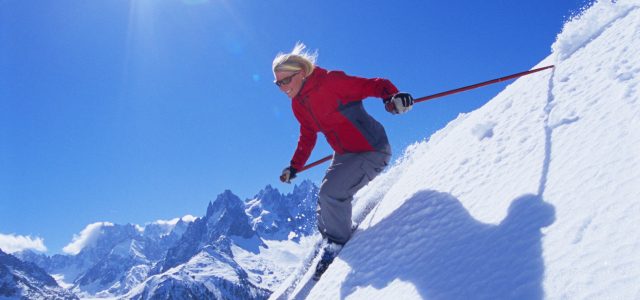
SKI FIT
Winter is approaching and while injury cannot be altogether prevented, we can certainly do a lot to reduce the risks and prepare for the challenges of skiing and snowboarding, writes expert Jane Connolly of Whalley Physio
It’s easy to forget just how physical a whole days skiing can be. A good baseline fitness means you’re less likely to be fatigued, a common cause of injury, and if you’ve a niggling injury, now is the time to get it dealt with, rather than two weeks before you travel.
We’ve all experienced the ‘burn’ in the legs with the build-up of lactic acid so if you really want to ski longer, harder and safer, you need a ski fitness programme that includes endurance, strength and flexibility.
To improve cardiovascular fitness, you need aerobic sessions of at least 20 minutes three times a week. It’s also important to recognise you need high levels of balance, coordination and dynamic lateral movement which is why at Whalley Physio we use the Skiers Edge which provides the best ski specific fitness workout. The key muscle groups to strengthen for skiing or snowboarding are:
1. The quadriceps which hold you in position and provide protection for your knees. Great exercises for the quadriceps are lunges and squats.
2. The hamstrings and glutes work hard to stabilise your body in that flexed position. Exercises include kettle bell swings, one leg bridge, step ups and hamstring rolls.
3. The inner thigh muscles work hard to keep your skis together whilst the outer thigh muscles keep your body stable and help turning. Try exercises like side lunges, side planks and monster walk. Remember the more dynamic the exercise, the better.
4. The calf muscles, especially soleus, work hard to stabilise the knee in a bent position. They also generate pressure through the forefoot to control the equipment, speed and direction. These muscles often need to be stretched as well as strengthened.
5. The back has to work hard to maintain a flexed position against gravity. To protect the spine from injury, the core must be conditioned. Work these muscles with exercises like bicycle crunches, plank, medicine ball twists, lunge wood chops and back extensions.
6. Don’t forget to work your biceps and triceps along with your back. Arms help push off with your poles while stabilising your shoulder joints.
Exercises on the Bosu ball or in single leg standing can be added to improve balance and weight transference, which is essential for turning. It takes six to 12 weeks to noticeably improve your fitness, so start now!
www.whalleyphysiotherapy.co.uk

